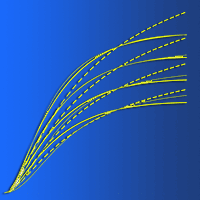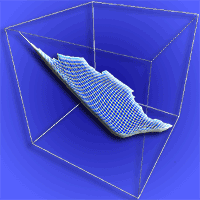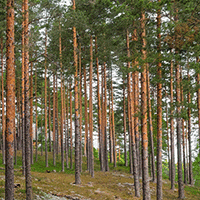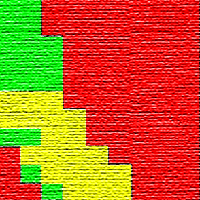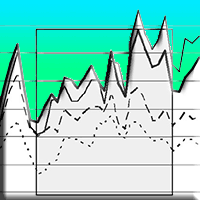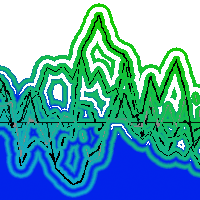The most widely accepted method of evaluating site productivity is site index. In spite of some important restrictions it is still a useful concept in both forest research and management. One of the most important challenges when using site index is an age trend manifested by a negative correlation between site index and stand age. Age trend may result from the inappropriateness of site index models. In this paper we develop a new approach for assessing age bias in site index models. Field data collected from 311 sample plots established in Norway spruce stands in the Polish region of the Carpathians formed the basis of this study. In the proposed approach the appropriateness of site index models is assessed by analyzing the existence of age trends in residuals of geocentric site index prediction models. Using the developed approach we demonstrated that when significant correlations exist between residuals of site index prediction models and stand age, it likely indicates the existence of an age trend and thus the inappropriateness of site index model. To remedy this situation, we demonstrated that the observed age trend can be quantified and utilized in new, non-biased, site index models.
Keywords
, , , ,
Citation
Socha J, Coops NC, Ochal W (2016). Assessment of age bias in site index equations. iForest 9: 402-408. - doi: 10.3832/ifor1548-008
Academic Editor
Agostino Ferrara
Paper history
Received: Dec 30, 2014
Accepted: Dec 10, 2015
First online: Jan 11, 2016
Publication Date: Jun 01, 2016
Publication Time: 1.07 months
© SISEF - The Italian Society of Silviculture and Forest Ecology 2016
Open Access
This article is distributed under the terms of the Creative Commons Attribution-Non Commercial 4.0 International (https://creativecommons.org/licenses/by-nc/4.0/), which permits unrestricted use, distribution, and reproduction in any medium, provided you give appropriate credit to the original author(s) and the source, provide a link to the Creative Commons license, and indicate if changes were made.

Breakdown by View Type
(Waiting for server response...)
Article Usage
Total Article Views: 49767
(from publication date up to now)
Breakdown by View Type
HTML Page Views: 41618
Abstract Page Views: 3041
PDF Downloads: 3816
Citation/Reference Downloads: 24
XML Downloads: 1268
Web Metrics
Days since publication: 3630
Overall contacts: 49767
Avg. contacts per week: 95.97
Article Citations
Article citations are based on data periodically collected from the Clarivate Web of Science web site
(last update: Mar 2025)
Total number of cites (since 2016): 19
Average cites per year: 1.90
Publication Metrics
by Dimensions ©
Articles citing this article
List of the papers citing this article based on CrossRef Cited-by.
(1)
Adams JP, Matney TG, Land SB, Belli KL, Duzan HW (2006)Incorporating genetic parameters into a loblolly pine growth-and-yield model. Canadian Journal of Forest Research 36: 1959-1967.
CrossRef |
Gscholar
(2)
Aertsen W, Kint V, Van Orshoven J, Ozkan K, Muys B (2010)Comparison and ranking of different modelling techniques for prediction of site index in Mediterranean mountain forests. Ecological Modelling 221: 1119-1130.
CrossRef |
Gscholar
(3)
Albert M, Schmidt M (2010)Climate-sensitive modelling of site-productivity relationships for Norway spruce (
Picea abies (L.) Karst.) and common beech (
Fagus sylvatica L.). Forest Ecology and Management 259: 739-749.
CrossRef |
Gscholar
(4)
Alvarez-González JG, Ruiz-González AD, Rodríguez-Soalleiro R, Barrio-Anta M (2005)Ecorregional site index models for
Pinus pinaster in Galicia (northwestern Spain). Annals of Forest Science 62: 115-127.
CrossRef |
Gscholar
(5)
Bøhler F, Bernt-Håvar Ø (2011)Estimation of site-index in old, semi-natural stands of Norway spruce at high altitude. In: Proceedings of the Conference “Forest Management and Silviculture in the North - Balancing Future Needs”. Stjørdal (Norway) 6-8 Sep 2011, Book of Abstracts. Rapport Fra Skog Og Landskap, Norway, pp. 53.
Online |
Gscholar
(6)
Bontemps JD, Bouriaud O (2013)Predictive approaches to forest site productivity: recent trends, challenges and future perspectives. Forestry 87: 109-128.
CrossRef |
Gscholar
(7)
Bravo-Oviedo A, Tomé M, Bravo F, Montero G, Del Río M (2008)Dominant height growth equations including site attributes in the generalized algebraic difference approach. Canadian Journal of Forest Research 38: 2348-2358.
CrossRef |
Gscholar
(8)
Bravo-Oviedo A, Gallardo-Andrés C, Del Río M, Montero G (2010)Regional changes of
Pinus pinaster site index in Spain using a climate-based dominant height model. Canadian Journal of Forest Research 40: 2036-2048.
CrossRef |
Gscholar
(9)
Bruchwald A, Dudek A, Michalak K, Rymer-Dudzinska T, Wróblewski L, Zasada M (1999)Model wzrostu dla drzewostanów swierkowych [A growth model for Norway spruce stands] . Sylwan 143 (1): 19-31. [in Polish]
Gscholar
(10)
Bruchwald A, Michalak K, Wróblewski L, Zasada M (2000)Wzrost wysokosci sosny w róznych regionach Polski [Height growth of Scots pine in various regions of Poland] . In: “Przestrzenne zróznicowanie wzrostu sosny” [Spatial variation in Scots pine growth] (Bruchwald A ed). Fundacja Rozwój SGGW, Warszawa, Poland, pp. 77-83. [in Polish]
Gscholar
(11)
Buford MA, Burkhart HE (1987)Genetic improvement effects on growth and yield of Loblolly pine plantations. Forest Science 33: 707-724.
Online |
Gscholar
(12)
Burkhart HE, Tomé M (2012)Modeling forest trees and stands. Springer-Verlag, Dordrecht, The Netherlands, pp. 471.
CrossRef |
Gscholar
(13)
Chen HYH, Klinka K (2000)Height growth models for high-elevation subalpine fir, Engelmann spruce, and Lodgepole pine in British Columbia. Western Journal of Applied Forestry 15: 62-69.
Online |
Gscholar
(14)
Cieszewski CJ (2001)Three methods of deriving advanced dynamic site equations demonstrated on inland Douglas-fir site curves. Canadian Journal of Forest Research 31: 165-173.
CrossRef |
Gscholar
(15)
Cieszewski CJ, Strub M (2007)Parameter estimation of base-age invariant site index models: which data structure to use? A discussion. Forest Science 53: 552-555.
Online |
Gscholar
(16)
Coops NC, Coggins SB, Kurz W (2007)Mapping the environmental limitations to growth of coastal Douglas-fir stands on Vancouver Island, British Columbia. Tree Physiology 27: 805-815.
CrossRef |
Gscholar
(17)
Coops NC, Hember R, Waring RH (2010)Assessing the impact of current and projected climates on Douglas-fir productivity in British Columbia, Canada, using a process-based model (3-PG). Canadian Journal of Forest Research 40: 511-524.
CrossRef |
Gscholar
(18)
Elfving B, Tegnhammar L (1996)Trends of tree growth in Swedish forests 1953-1992: an analysis based on sample trees from the national forest inventory. Scandinavian Journal of Forest Research 11: 26-37.
CrossRef |
Gscholar
(19)
Fries A, Lindgren D, Ying CC, Ruotsalainen S, Lindgren K, Elfving B, Karlmats U (2000)The effect of temperature on site index in western Canada and Scandinavia estimated from IUFRO
Pinus contorta provenance experiments. Canadian Journal of Forest Research 30: 921-929.
CrossRef |
Gscholar
(20)
García O (2010)Dynamical implications of the variability representation in site-index modelling. European Journal of Forest Research 130: 671-675.
CrossRef |
Gscholar
(21)
Hasenauer H, Nemani RR, Schadauer K, Running SW (1999)Forest growth response to changing climate between 1961 and 1990 in Austria. Forest Ecology and Management 122: 209-219.
CrossRef |
Gscholar
(22)
Hastie TJ, Tibshirani RJ (1990)Generalized additive models. CRC Press, Boca Raton, FL, USA, pp. 352.
Online |
Gscholar
(23)
Johansson T (1995)Site index curves for Norway spruce plantations on farmland with different soil types. Studia Forestalia Suecica 198: 1-19.
Online |
Gscholar
(24)
Kiviste A (1999)Site index change in the 1950s-1990s according to Estonian forest inventory data. In: Proceedings of the International Seminar “Causes and Consequences of Accelerating Tree Growth in Europe” (Karjalainen T, Spiecker H, Laroussinie O ed). Nancy (France) 14-16 May 1998. EFI Proceedings no. 27, Joensuu, Finland, pp. 87-100.
Online |
Gscholar
(25)
Klinkal K, Carter RE, Chert HYH (1996)Height growth-elevation relationships in subalpine forests of interior British Columbia. The Forestry Chronicle 72: 193-198.
CrossRef |
Gscholar
(26)
Monserud RA, Yang Y, Huang S, Tchebakova N (2008)Potential change in lodgepole pine site index and distribution under climatic change in Alberta. Canadian Journal of Forest Research 38: 343-352.
CrossRef |
Gscholar
(27)
Monserud RA (1984)Height growth and site index curves for inland Douglas-fir based on stem analysis data and forest habitat type. Forest Science 30: 943-965.
Online |
Gscholar
(28)
Monserud RA, Rehfeldt GE (1990)Genetic and environmental components of variation of site index in Inland Douglas-fir. Forest Science 36: 1-9.
Online |
Gscholar
(29)
Nigh GD, Krestov PV, Klinka K (2002)Height growth of black spruce in British Columbia. The Forestry Chronicle 78: 306-313.
CrossRef |
Gscholar
(30)
Nothdurft A, Wolf T, Ringeler A, Böhner J, Saborowski J (2012)Spatio-temporal prediction of site index based on forest inventories and climate change scenarios. Forest Ecology and Management 279: 97-111.
CrossRef |
Gscholar
(31)
Pretzsch H, Biber P, Schütze G, Uhl E, Rötzer T (2014)Forest stand growth dynamics in Central Europe have accelerated since 1870. Nature Communications 5: 4967.
CrossRef |
Gscholar
(32)
Pretzsch H, Dieler J, Seifert T, Rötzer T (2012)Climate effects on productivity and resource-use efficiency of Norway spruce (
Picea abies [L.] Karst.) and European beech (
Fagus sylvatica [L.]) in stands with different spatial mixing patterns. Trees 26: 1343-1360.
CrossRef |
Gscholar
(33)
Pretzsch H, Grote R, Reineking B, Rötzer T, Seifert S (2008)Models for forest ecosystem management: a European perspective. Annals of Botany 101: 1065-1087.
CrossRef |
Gscholar
(34)
Schadauer K (1999)Site index and site characteristics of Norway spruce according to data of the Austrian Forest Inventory. Report 171, Mitteilungen der Forstlichen Bundesversuchsantalt, Wien, Austria, pp. 38.
Gscholar
(35)
Schwappach A (1943)Ertragstafeln der wichtigeren Holzarten [Yield tables for the most important forest tree species] . Druckerei Merkur, Prague, Czech Republic, pp. 49-55.
Gscholar
(36)
Sharma RP, Brunner A, Eid T (2012)Site index prediction from site and climate variables for Norway spruce and Scots pine in Norway. Scandinavian Journal of Forest Research 27: 619-636.
CrossRef |
Gscholar
(37)
Sharma RP, Brunner A, Eid T, Oyen BH (2011)Modelling dominant height growth from national forest inventory individual tree data with short time series and large age errors. Forest Ecology and Management 262: 2162-2175.
CrossRef |
Gscholar
(38)
Skovsgaard JP, Vanclay JK (2008)Forest site productivity: a review of the evolution of dendrometric concepts for even-aged stands. Forestry 81: 13-31.
CrossRef |
Gscholar
(39)
Skovsgaard JP, Vanclay JK (2013)Forest site productivity: a review of spatial and temporal variability in natural site conditions. Forestry 86: 305-315.
CrossRef |
Gscholar
(40)
Socha J (2008)Effect of topography and geology on the site index of
Picea abies in the West Carpathian, Poland. Scandinavian Journal of Forest Research 23: 203-213.
CrossRef |
Gscholar
(41)
Socha J (2011)Site index curves for Norway spruce on mountain habitats. Sylwan 155: 816-826.
Gscholar
(42)
Socha J, Orzel S (2011)Dynamiczne krzywe bonitacyjne dla drzewostanów sosnowych Puszczy Niepolomickiej [Dynamic site index curves for Scots pine stands in NiepoÅomice primeval forest] . Sylwan 155: 301-312. [in Polish]
Gscholar
(43)
Solberg S, Dobbertin M, Reinds GJ, Lange H, Andreassen K, Fernandez PG, Hildingsson A, De Vries W (2009)Analyses of the impact of changes in atmospheric deposition and climate on forest growth in European monitoring plots: a stand growth approach. Forest Ecology and Management 258: 1735-1750.
CrossRef |
Gscholar
(44)
Spiecker H, Mielikäinen K, Kohl M, Skovsgaard J (1996)Growth trends in European forests. Springer-Verlag, Berlin, Heidelberg, New York, pp. 41-88.
Gscholar
(45)
Splechtna BE (2001)Height growth and site index models for Pacific silver fir in southwestern British Columbia. Journal of Ecosystem Management 1: 1-14.
Gscholar
(46)
Subedi N, Sharma M, Parton J (2009)An evaluation of site index models for young Black spruce and Jack pine plantations in a changing climate. Climate Change Research Report, Ministry of Natural Resources, Ontario, Canada, pp. 15.
Online |
Gscholar
(47)
Tegnhammar L (1992)On the estimation of site index for Norway spruce. Report 53, Department of Forest Survey, Swedish University of Agricultural Sciences, Uppsala, Sweden, pp. 259.
Gscholar
(48)
Waring R, Coops N, Mathys A, Hilker T, Latta G (2014)Process-based modeling to assess the effects of recent climatic variation on site productivity and forest function across Western North America. Forests 5: 518-534.
CrossRef |
Gscholar
(49)
Yue C, Mäkinen H, Klädtke J, Kohnle U (2014)An approach to assessing site index changes of Norway spruce based on spatially and temporally disjunct measurement series. Forest Ecology and Management 323: 10-19.
CrossRef |
Gscholar
